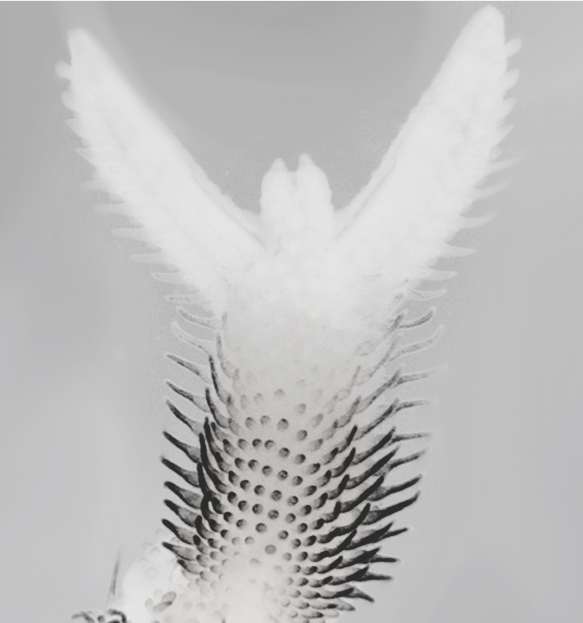Birds take flight with help from Sonic hedgehog
Posted by the Node, on 6 May 2020
A Press Release from Development
Flight feathers are amazing evolutionary innovations that allowed birds to conquer the sky. A study led by Matthew Towers (University of Sheffield, UK) and Marian Ros (University of Cantabria, Spain) and published in the journal Development now reveals that flight feather identity is established thanks to Sonic hedgehog – a signalling molecule well-known for giving the digits of the limb their different identities (so that your thumb is different from your pinky, for example). These findings suggest the pre-existing digit identity mechanism was co-opted during the evolution of flight feathers, allowing birds take to the air.
Feathers and the flight they support have long fascinated humans. In the bird embryo, feathers begin as buds—thickenings of the epidermis—that then develop into follicles, from which the keratin-based feathers are produced. Not all feathers are equal, however—compare for instance the downy feathers on the breast of a robin with the flight feathers of its wing. Classical embryological experiments in the 1950s, which involved grafting one part of the embryo on to another, suggested that feather identity (e.g. the choice to become a down versus a flight feather) is established at the earliest stages of development, even before the feather buds form. But in the seventy-odd years since then, we still don’t know much about which signals regulate feather identity.
The new study, carried out with Lara Busby as first author, reveals that flight feather identity is specified by Sonic hedgehog (Shh), a famous signalling molecule known to be involved in the development of limb digits, including human fingers. (And yes, Shh is named after the computer game character, but that’s another story.) Using chicken embryos, the scientists found that Shh is required in the earliest stages of wing development for the mature birds to develop flight feathers. They also defined a set of genes that are likely to be involved in this process. Importantly, they discovered that Shh works in a defined temporal sequence to specify the different flight feather identities, mirroring how it specifies the different digit identities. This similarity suggests that the digit identity network was co-opted for flight feather development during evolution.

Dr. Towers said: “Flight feathers are one of the most important evolutionary adaptations that allowed birds to take to the air. Our unexpected findings, showing that the digits and flight feathers share remarkably similar developmental programmes, provide important insights into how the bird wing evolved to permit flight.”
The researchers hope to extend this work by trying to understand how the early exposure of embryonic chick wing bud cells to Shh is ‘memorised’ to allow flight feather formation at a much later stage of development.
Busby, L., Aceituno, C., McQueen, C., Rich, C.A., Ros, M.A., Towers, M. (2020) Sonic hedgehog specifies flight feather positional information in avian wings. Development, 147, dev188821. doi: 10.1242/dev.188821
Contact: Dr. Matthew Towers, Reader of Developmental Biology and Wellcome Senior Fellow in Basic Biomedical Science at the University of Sheffield, UK.


 (No Ratings Yet)
(No Ratings Yet)